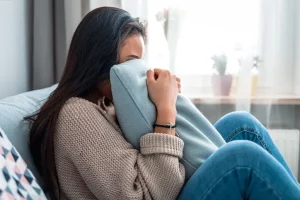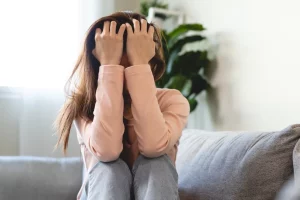The complexities of co-occurring disorders present significant challenges for both patients and healthcare providers. As technology evolves, new solutions emerge that promise to enhance recovery experiences. Telehealth, mobile applications, and wearables offer innovative ways to deliver personalized care and foster community connections. These developments raise critical questions about their effectiveness and potential impact on treatment outcomes. What implications do these advancements hold for the future of recovery in individuals facing these dual challenges?
Key Takeaways
- AI and machine learning enhance diagnostic accuracy for co-occurring disorders, leading to more effective and personalized treatment plans.
- Telehealth platforms provide greater access to mental health professionals, reducing barriers to therapy and fostering community connections.
- Mobile applications enable real-time feedback and progress tracking, encouraging accountability and empowering individuals in their recovery journey.
- Mindfulness-based interventions combined with cognitive-behavioral strategies offer holistic approaches to address both substance use and mental health issues.
- Wearable technology monitors emotional states and vital signs, facilitating timely interventions and support during recovery.
Understanding Co-Occurring Disorders: The Dual Challenge
Although many individuals may grapple with mental health issues independently, the reality of co-occurring disorders presents a more complex challenge, as it intertwines substance use disorders with mental health conditions. This duality complicates diagnosis and treatment, often leading individuals to feel isolated in their struggles. Those facing co-occurring disorders may experience heightened symptoms, creating a cycle that reinforces feelings of inadequacy and despair. The stigma surrounding both mental health and addiction can further alienate them, diminishing their sense of belonging. Understanding co-occurring disorders requires a compassionate approach that recognizes the intertwined nature of these challenges, fostering an environment where individuals feel seen and supported. By addressing both aspects simultaneously, recovery becomes more attainable, paving the way for holistic healing and reintegration into the community.
The Role of Technology in Identifying Co-Occurring Disorders
As advancements in technology continue to reshape various fields, the identification of co-occurring disorders is experiencing a transformative shift. Digital tools, such as artificial intelligence and machine learning algorithms, analyze patient data to reveal patterns often overlooked in traditional assessments. This innovative approach not only enhances diagnostic accuracy but also fosters a deeper understanding of the complexities surrounding co-occurring disorders. In addition, telehealth platforms enable broader access to mental health professionals, ensuring that individuals seeking support feel seen and heard. By integrating technology into the identification process, the mental health community cultivates a sense of belonging, encouraging individuals to seek help without stigma. Ultimately, these advancements pave the way for more personalized care, essential for effective recovery journeys.
Innovative Treatment Approaches for Co-Occurring Disorders
Building on the advancements in identifying co-occurring disorders, innovative treatment approaches are now emerging to address the unique needs of individuals facing these complex challenges. These approaches often integrate evidence-based therapies with holistic practices, fostering a thorough recovery environment. For example, mindfulness-based interventions and cognitive-behavioral strategies are being combined to tackle both mental health and substance use issues simultaneously. Additionally, personalized treatment plans leverage data analytics to tailor therapies to individual progress, enhancing engagement and effectiveness. Such advancements not only improve clinical outcomes but also create a sense of belonging and community among individuals. As these innovative methods gain traction, they pave the way for more inclusive and effective support systems for those maneuvering the dual challenges of co-occurring disorders.

Engaging Patients: Technology-Driven Support Systems
A growing number of technology-driven support systems are transforming the way individuals with co-occurring disorders engage in their recovery journey. These systems foster a sense of belonging by creating supportive communities where users can share experiences and access resources tailored to their unique needs. Mobile applications and online platforms provide real-time feedback, facilitating ongoing communication with healthcare providers and peers. By utilizing telehealth services, individuals can participate in therapy sessions from the comfort of their homes, reducing barriers to access. Furthermore, personalized reminders and progress tracking encourage accountability and self-reflection. Ultimately, these innovative solutions not only enhance engagement but also empower individuals, reinforcing their commitment to recovery while cultivating a supportive network that understands their challenges.
Future Trends in Technology for Co-Occurring Disorders Recovery
The landscape of recovery for individuals with co-occurring disorders is poised for significant advancements as technology continues to evolve. Emerging trends indicate a shift towards personalized treatment through artificial intelligence, enabling tailored interventions that resonate with individual needs. Virtual reality therapy provides immersive experiences that can enhance empathy and understanding of one’s challenges, fostering a sense of belonging. Additionally, wearable technology can monitor crucial signs and emotional states, offering real-time data to support recovery efforts. Telehealth services are likely to expand, ensuring accessibility and community connection from anywhere. These innovations not only promise to enhance recovery outcomes but also cultivate an inclusive environment where individuals feel supported and empowered in their journey toward healing from co-occurring disorders.
Frequently Asked Questions
What Are the Common Signs of Co-Occurring Disorders?
Common signs of co-occurring disorders include overlapping symptoms such as mood swings, substance abuse, anxiety, and social withdrawal, leading to complex challenges. Recognizing these signs fosters understanding and connection, encouraging individuals to seek extensive support and healing.
How Can Family Members Support Someone With Co-Occurring Disorders?
Family members can support individuals with co-occurring disorders by fostering open communication, educating themselves about the conditions, encouraging treatment adherence, and creating a safe, non-judgmental environment that promotes understanding and emotional connection.
Are Co-Occurring Disorders More Common in Certain Demographics?
Research indicates that co-occurring disorders are more prevalent among certain demographics, particularly those facing socioeconomic challenges, marginalized communities, and individuals with limited access to mental health resources, emphasizing the need for targeted support and intervention strategies.
What Is the Impact of Stigma on Individuals With Co-Occurring Disorders?
Stigma considerably hinders individuals with co-occurring disorders, fostering isolation and discouraging treatment. This societal judgment exacerbates feelings of shame, reducing the likelihood of seeking help, and consequently complicating recovery and perpetuating the cycle of suffering.
How Can I Find Local Resources for Co-Occurring Disorders Support?
To find local resources for co-occurring disorders support, individuals can consult mental health directories, community health centers, or local support groups, fostering a sense of belonging and connection with others facing similar challenges.
Conclusion
To sum up, the integration of technology into the treatment of co-occurring disorders offers a promising pathway to enhance recovery. By leveraging telehealth, mobile applications, and AI-driven tools, healthcare providers can deliver personalized care that fosters engagement and accountability among patients. As these innovations continue to evolve, they hold the potential to reshape therapeutic approaches, ensuring that individuals facing the dual challenges of mental health and substance use disorders receive the extensive support they need to thrive.
You May Also Like To Read:

